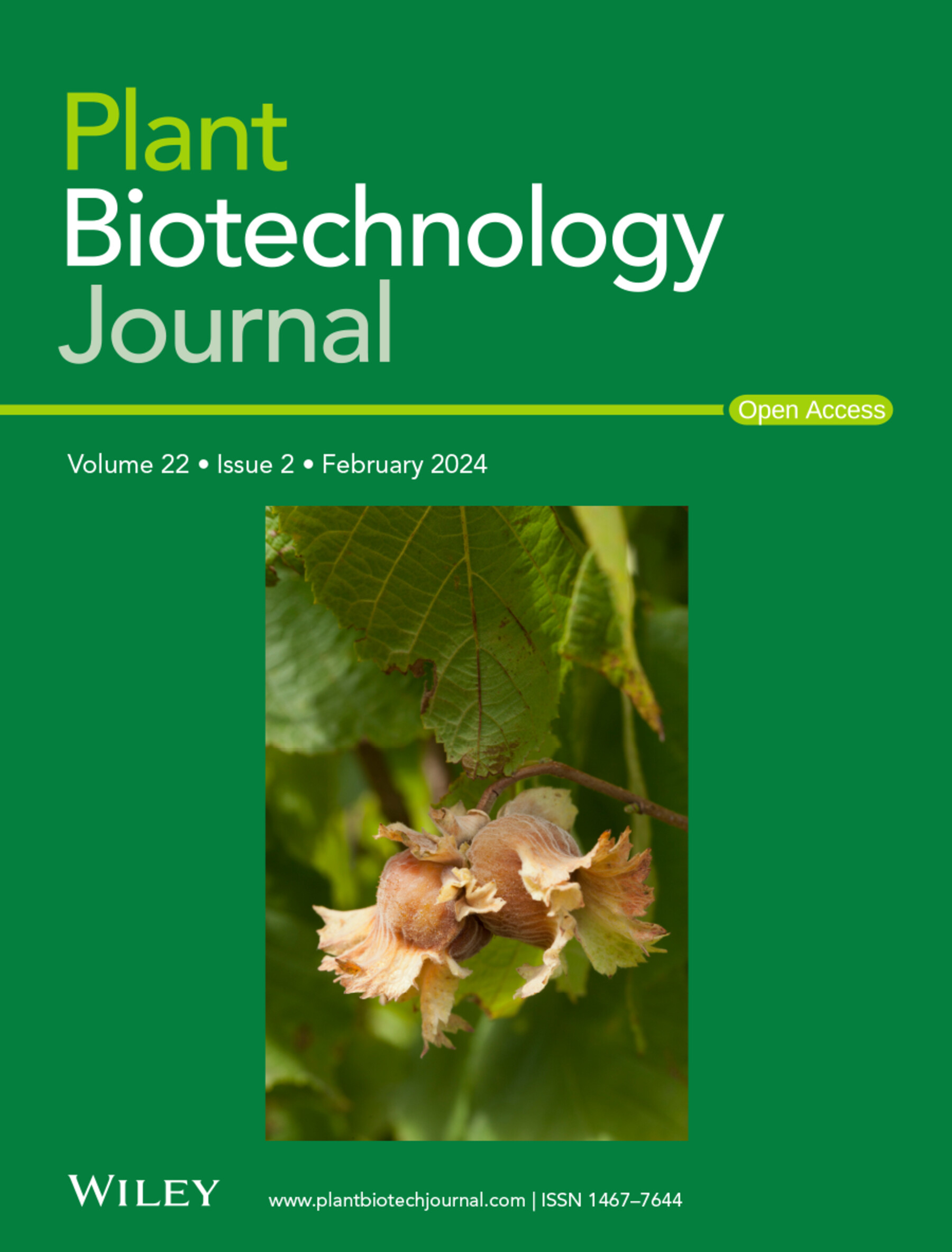Enhancing quality and yield of recombinant secretory IgA antibodies in Nicotiana benthamiana by endoplasmic reticulum engineering
IF 10.1
1区 生物学
Q1 BIOTECHNOLOGY & APPLIED MICROBIOLOGY
引用次数: 0
Abstract
The production of complex multimeric secretory immunoglobulins (SIgA) in Nicotiana benthamiana leaves is challenging, with significant reductions in complete protein assembly and consequently yield, being the most important difficulties. Expanding the physical dimensions of the ER to mimic professional antibody-secreting cells can help to increase yields and promote protein folding and assembly. Here, we expanded the ER in N. benthamiana leaves by targeting the enzyme CTP:phosphocholine cytidylyltransferase (CCT), which catalyses the rate-limiting step in the synthesis of the key membrane component phosphatidylcholine (PC). We used CRISPR/Cas to perform site-directed mutagenesis of each of the three endogenous CCT genes in N. benthamiana by introducing frame-shifting indels to remove the auto-inhibitory C-terminal domains. We generated stable homozygous lines of N. benthamiana containing different combinations of the edited genes, including plants where all three isofunctional CCT homologues were modified. Changes in ER morphology in the mutant plants were confirmed by in vivo confocal imaging and substantially increased the yields of two fully assembled SIgAs by prolonging the ER residence time and boosting chaperone accumulation. Through a combination of ER engineering with chaperone overexpression, we increased the yields of fully assembled SIgA by an order of magnitude, reaching almost 1 g/kg fresh leaf weight. This strategy removes a major roadblock to producing SIgA and will likely facilitate the production of other complex multimeric biopharmaceutical proteins in plants.利用内质网工程技术提高本菌烟草分泌型IgA抗体的质量和产量
在烟草叶中生产复杂的多聚物分泌型免疫球蛋白(SIgA)具有挑战性,其中最重要的困难是蛋白质的完全组装和产量大幅降低。扩大ER的物理尺寸以模拟专业的抗体分泌细胞有助于提高产量并促进蛋白质的折叠和组装。在这里,我们通过靶向 CTP:phosphocholine cytidylyltransferase(CCT)酶扩大了 N. benthamiana 叶片中的ER,该酶催化关键膜成分磷脂酰胆碱(PC)合成过程中的限速步骤。我们利用 CRISPR/Cas 对 N. benthamiana 中的三个内源 CCT 基因分别进行了定点诱变,通过引入移帧嵌段来移除自动抑制的 C 端结构域。我们培育出了含有不同编辑基因组合的 N. benthamiana 稳定同源品系,包括对所有三个同功能 CCT 同源物进行修饰的植株。体内共聚焦成像证实了突变体植株ER形态的变化,并通过延长ER停留时间和促进伴侣蛋白积累,大大提高了两种完全组装的SIgAs的产量。通过ER工程与伴侣蛋白过表达的结合,我们将完全组装的SIgA产量提高了一个数量级,几乎达到了1克/千克鲜叶重量。这一策略消除了生产 SIgA 的主要障碍,并有可能促进在植物中生产其他复杂的多聚生物制药蛋白。
本文章由计算机程序翻译,如有差异,请以英文原文为准。
求助全文
约1分钟内获得全文
求助全文
来源期刊

Plant Biotechnology Journal
生物-生物工程与应用微生物
CiteScore
20.50
自引率
2.90%
发文量
201
审稿时长
1 months
期刊介绍:
Plant Biotechnology Journal aspires to publish original research and insightful reviews of high impact, authored by prominent researchers in applied plant science. The journal places a special emphasis on molecular plant sciences and their practical applications through plant biotechnology. Our goal is to establish a platform for showcasing significant advances in the field, encompassing curiosity-driven studies with potential applications, strategic research in plant biotechnology, scientific analysis of crucial issues for the beneficial utilization of plant sciences, and assessments of the performance of plant biotechnology products in practical applications.
 求助内容:
求助内容: 应助结果提醒方式:
应助结果提醒方式:


